From Stained Glass to Relationships
By: Kayla Berkey
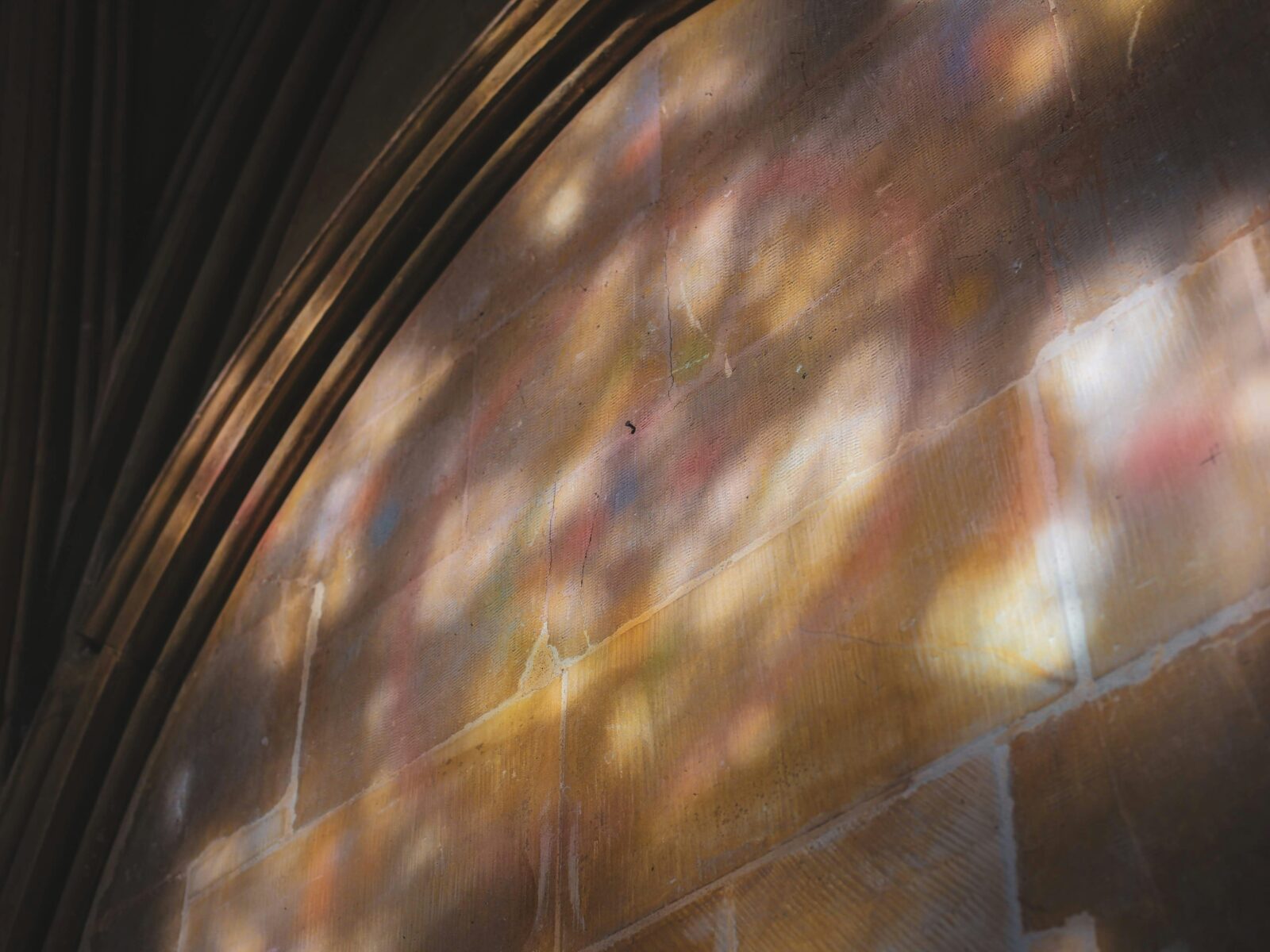
By: Kayla Berkey

Five years ago, George Floyd’s violent and traumatic death by a white Minnesota police officer set off global protests around the world. It caused many churches and individuals to begin asking new questions and to seek new engagement with anti-racism resources – many of whom reached out to the Rev. Velda Love, UCC minister for Racial Justice.
In response to the many requests, Love developed and led intensive 7-week anti-racism workshops using the Sacred Conversations to End Racism curriculum.
It was through these workshops that she met attendee Anita Keire, a member of Old First Reformed Church in Brooklyn, New York. In 2022, Love began meeting with Old First’s newly established Remembrance and Racial Justice Working Group.

Old First is one of the oldest congregations in New York City and dually affiliated with the United Church of Christ and the Reformed Church of America. The church’s Remembrance and Racial Justice Working Group began to dig deep, researching its denominational ancestry, including the Dutch involvement in the transatlantic slave trade and its impact on the Indigenous people of what became the United States.
Love has served as a resource and support for the group since, including co-leading an in-person congregational workshop with the working group in May.
“These meetings resulted in deeper cultural, historical, and contemporary dives into understanding the root causes, architects, and political purposes for the creation of racial hierarchy,” Love said. “First steps for people of European descent are for an internal interrogation of their immigrant ancestral history prior to their arrival on the North American continent.”
The worship space of Old First is grandiose – high vaulted ceilings and elaborate stained glass images, some in the famous Tiffany glass.
As the Remembrance and Racial Justice Working Group dove into the history of its founders, they realized that the sanctuary’s stained glass windows were very visible and representative pieces of the church’s links to slavery.
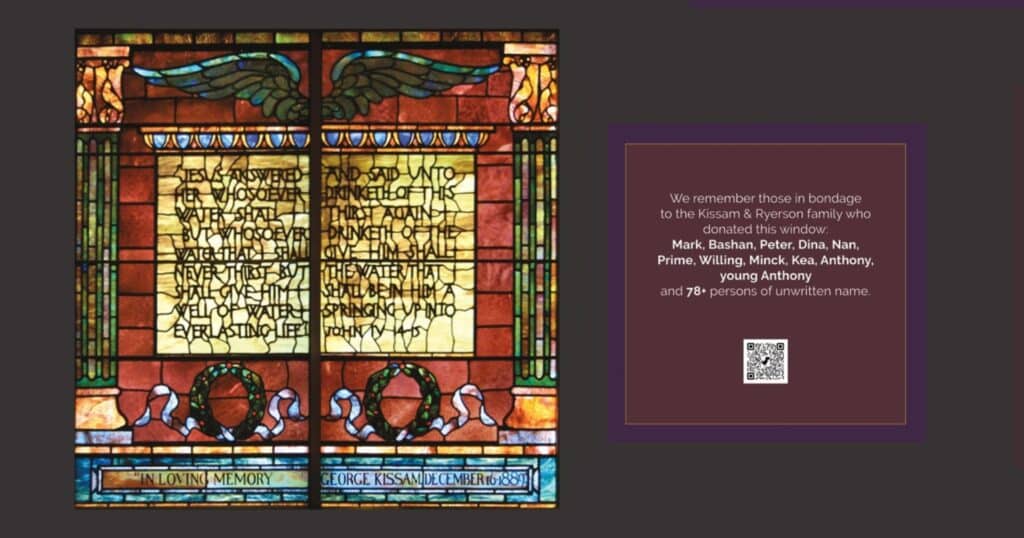
“The founding members of Old First inherited their wealth from their forebears over generations and were greatly enabled in this by their enslaved people. The most visible manifestation of their wealth and largesse is the stained glass windows in our sanctuary, donated and dedicated by nine founding families and ancestors,” shared Jane Barber, who leads the working group.
Names from these families are embedded directly within the windows.
The working group dug into historical records and wills and found the numbers of people enslaved by the families, including several of these individual’s names and stories. In 2023, the group created and installed signs with QR codes under each stained glass window to make visible and accessible the people and history that had been previously obscured. They presented this work to the congregation as a way “to unlearn a long practice of forgetting.”
“This practice started with the families who listed these names and numbers in their wills alongside livestock and furniture, forgetting their humanity in order to enslave them. It continued as our congregation left out the memories and stories of these people from our church’s history over the decades and centuries that followed,” the working group wrote in an explanation of the project.
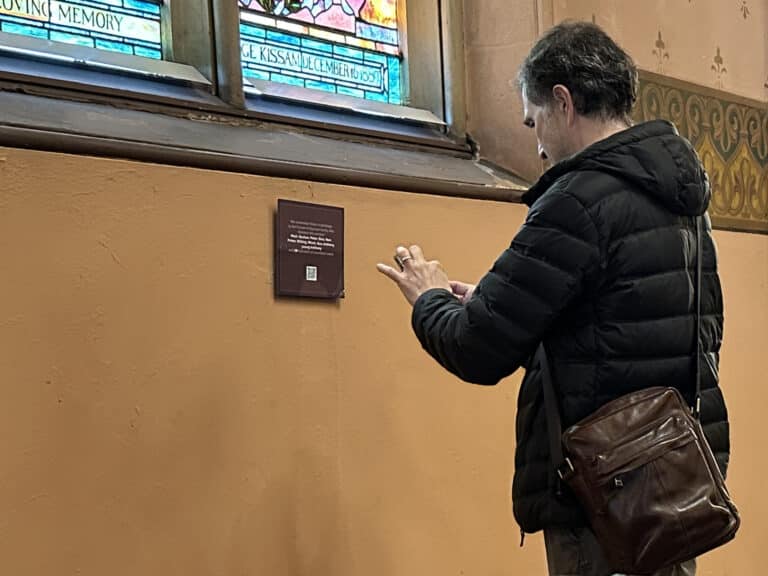
“We are owning the fact that we wouldn’t have this beautiful church with Tiffany glass windows if these donors hadn’t had free labor that built their wealth. It is a part of our building. It didn’t just happen at the time our church was built. It is in the brick and mortar of our building,” said the Rev. Cheri Kroon, who joined the working group when she became Old First’s pastor three years ago.
The working group continues to meet at least once each month. They gather around a table and discuss books and resources on racial and LGBTQ justice. As they learn together and consider ways to reflect their learning within the broader church, Barber guides the group to pay careful attention to the interpersonal relationships and ways of relating to one another at their table.
“We had this momentum of learning and discovery and uncovering, and now what about us personally?” Kroon reflected on how the group has grown. “It’s not just what’s happening out in the church and the world, but what is happening at our table. What is in our hearts? What are our fears around race? How are we treating each other? Who felt dismissed? That is a great teacher for us.”
Barber reflected on how, through leading and participating in the Old First working group, she has become a better listener.
“Slow down,” she advises. “This has been going on for 400 years. We can’t make a statement and go away. You can’t work at someone else’s pace and goals. You have to learn it in your bones and understand what’s happening now. It’s not quick work. It goes on forever.”
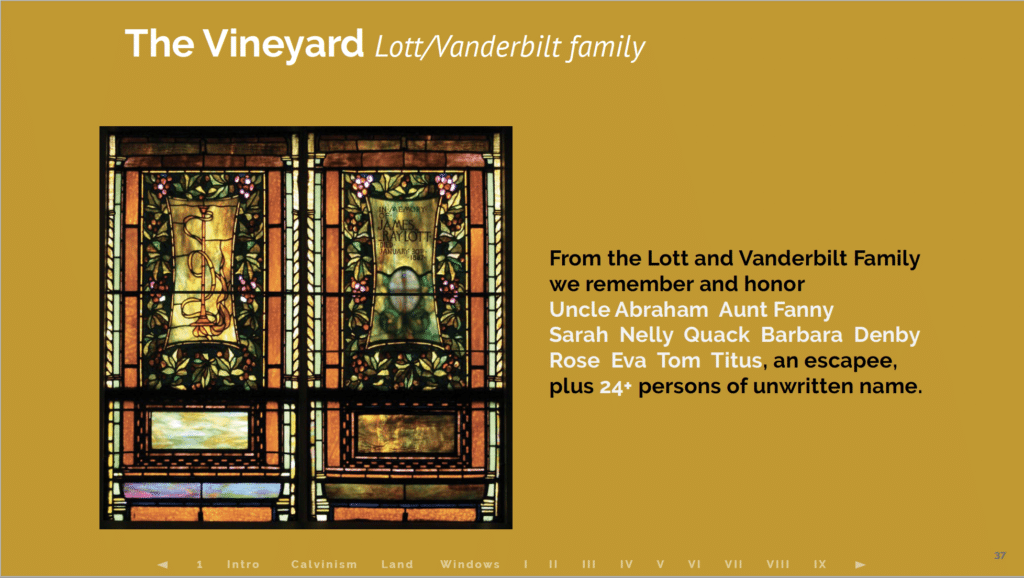
Love has continued to serve as a resource and support for the Old First working group. She met with the working group monthly over the course of a year to prepare its members to join her in co-leading an in-person, two-day workshop for the congregation that took place in May.
“Over the last three years, the group and I have developed relationships of trust,” Love said. “Their leadership demonstrated to members of the church their courage and readiness to navigate challenging and difficult conversations about racism and racial justice, settler colonialism, and the church’s history that was uncovered.”
“It was helpful and grounding working with Dr. Love. She helped us to form new questions,” Kroon said. “Having semi-annual meetings with her helps to have someone outside our internal group looking at us from an outside perspective and offering resources that really help.”
Love emphasizes that racial justice work does not end after in-person or online workshops; rather, this cultural-historical education is a life-long commitment of journey work.
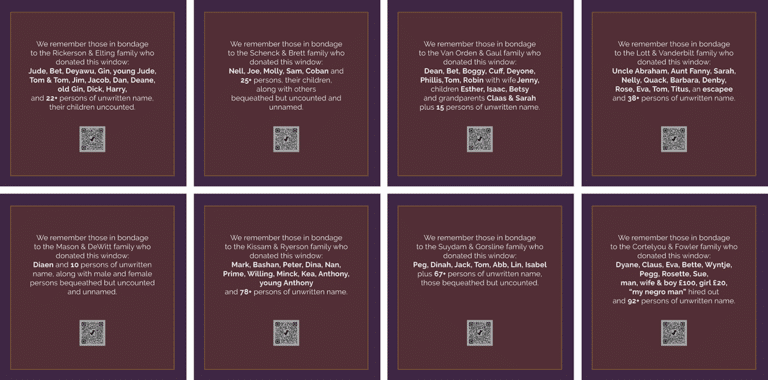
“The Old First racial justice group will continue doing their internal work, strengthening their internal muscles, addressing systemic and institutional biases, and talking openly about policies that harm and perpetuate injustice within their church and communities. They will share their insights and knowledge of how white supremacy remains entrenched in our current political crisis,” Love said. “Their public witness as Christians in a predominately white church can model to others and invite others to do their internal work. These goals are in recognition that centuries of miseducation must be addressed, and this is needed to understand our current reality of the dismantling of democracy, public education, and why our civil and human rights are under attack in 2025.”
This work, Kroon emphasized, is crucial to acting as the body of Christ.
“We sometimes think of these things as programs – social justice, anti-racism. I’ve learned it’s not a program,” Kroon said. “It has to be a way in which we are willing to learn and to change – not something we’re just adding. We’re looking in the mirror and back at history. We ask, ‘What is the sin in this?’ There’s a serious sin in this that has been here for so long and is so deep, so we have to be where it is in us. It’s spiritual work.”
“Old First Reformed Church is a model for churches within the UCC denomination and can serve as an ecumenical partner making an impact in church and society toward racial justice for all,” Love said.
SHARE THIS NEWS ARTICLE
Sign up to receive alerts about new stories and resources. You’ll also enjoy our Join the Movement newsletter, featuring changemaker profiles, reflections on current events in the movement toward racial justice, and more. Get sneak previews and information about upcoming events, workshops and webinars.

